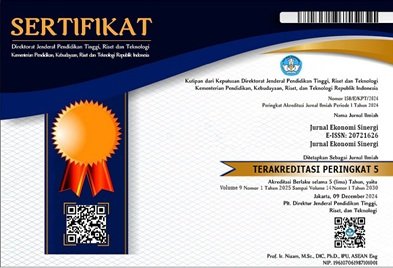PENGARUH PERILAKU KONSUMEN TERHADAP KEPUTUSAN PEMBELIAN PRODUK BARU
Kata Kunci:
Perilaku Konsumen, Keputusan Pembelian, Produk BaruAbstrak
Keberhasilan peluncuran produk baru di era persaingan perusahaan yang semakin ketat bergantung pada pemahaman perilaku konsumen. Tujuan dari penelitian ini adalah untuk meneliti bagaimana aspek-aspek perilaku konsumen memengaruhi keputusan untuk membeli produk baru. Sebanyak 150 responden yang telah membeli produk baru dalam enam bulan terakhir di berikan kuesioner sebagai bagian dari teknik penelitian kuantitatif. Hasil analisis regresi menunjukkan bahwa aspek budaya, pribadi, sosial, dan psikologis memengaruhi pembelian secara signifikan. Hasil-hasil ini menyoroti betapa pentingnya memiliki pemahaman yang komprehensif tentang perilaku konsumen untuk mengembangkan taktik pemasaran yang berhasil dan bertahan lama.
This study aims to examine the influence of Work Facilities, Work Motivation, and Compensation on Employee Job Satisfaction at PDAM Tirtanadi Sunggal. The research employed a quantitative method using multiple linear regression analysis with SPSS as the analytical tool. The results show that partially, the independent variables—Work Facilities, Work Motivation, and Compensation—do not have a significant effect on Job Satisfaction. This is indicated by the significance values of each variable being greater than 0.05. The simultaneous test (F-test) also shows that the three variables collectively do not have a significant influence on Job Satisfaction, with the calculated F-value lower than the F-table value and a significance level of 0.621 > 0.05. Furthermore, the coefficient of determination (R Square) of 0.037 indicates that only 3.7% of the variation in Job Satisfaction is explained by these variables, while the remaining 96.3% is influenced by other factors not examined in this study.





